Noon Report:
- Location: N 37° 56.40′, E 023° 38.12′
- Speed: Docked
- Course: Docked
- Weather: Partly Cloudy
- Temperature: 16º C; 61º F
- Wind: NW 4 knots; 5 mph
Back in January 2020 we spent several days in Athens while on a tour of Greece, so when we reviewed the excursion options (both ship sponsored and private) we kept saying; “Yep. We’ve been there/seen that.” So we decided that this would be the day to take advantage of the shuttle bus the ship was running into town and go knock around the city on our own.
The bus dropped us off across the street from Hadrian’s Arch…
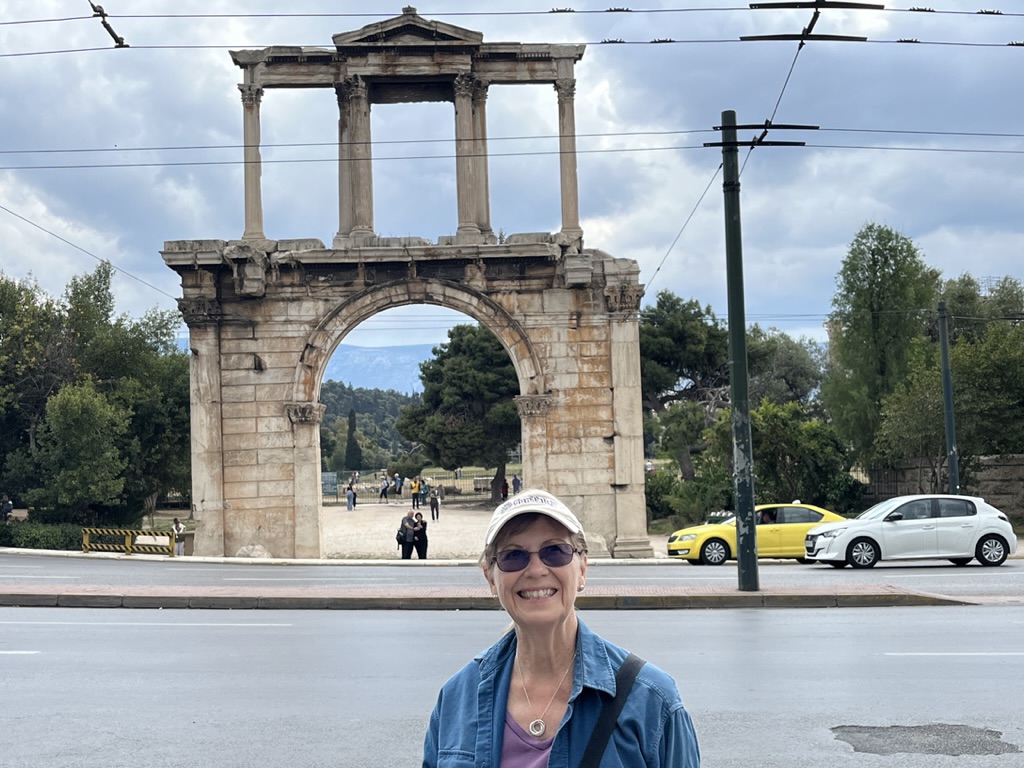
…which is just south of the Plaka – the heart of the city.
So we headed north to wander the quiet lanes,
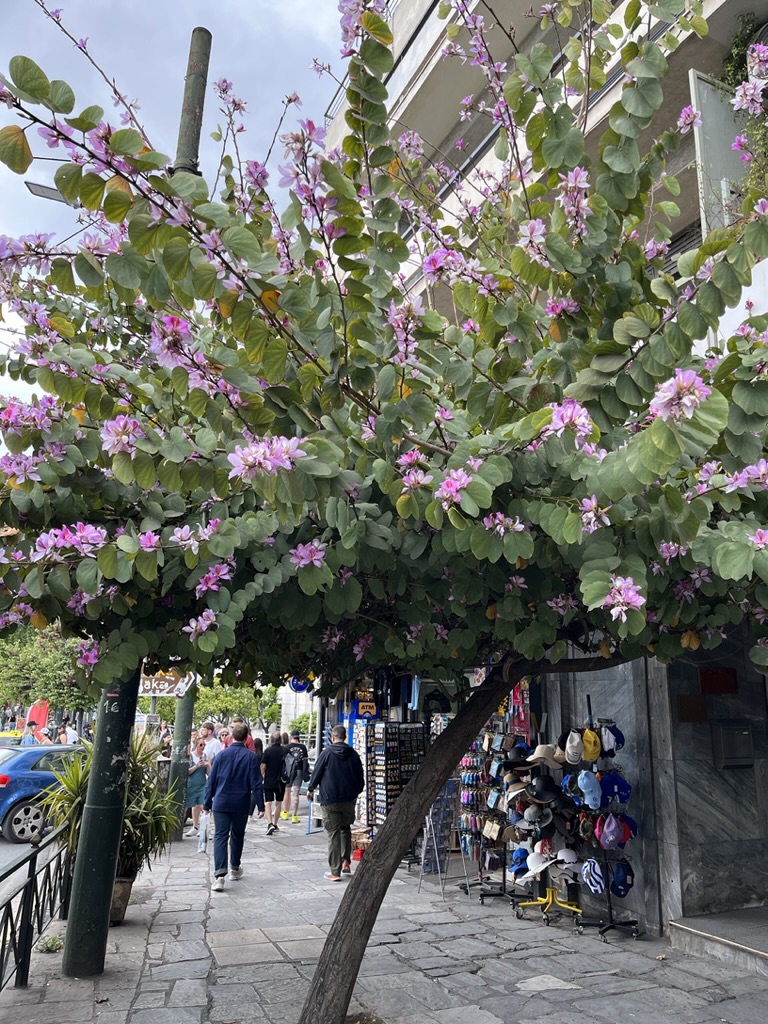
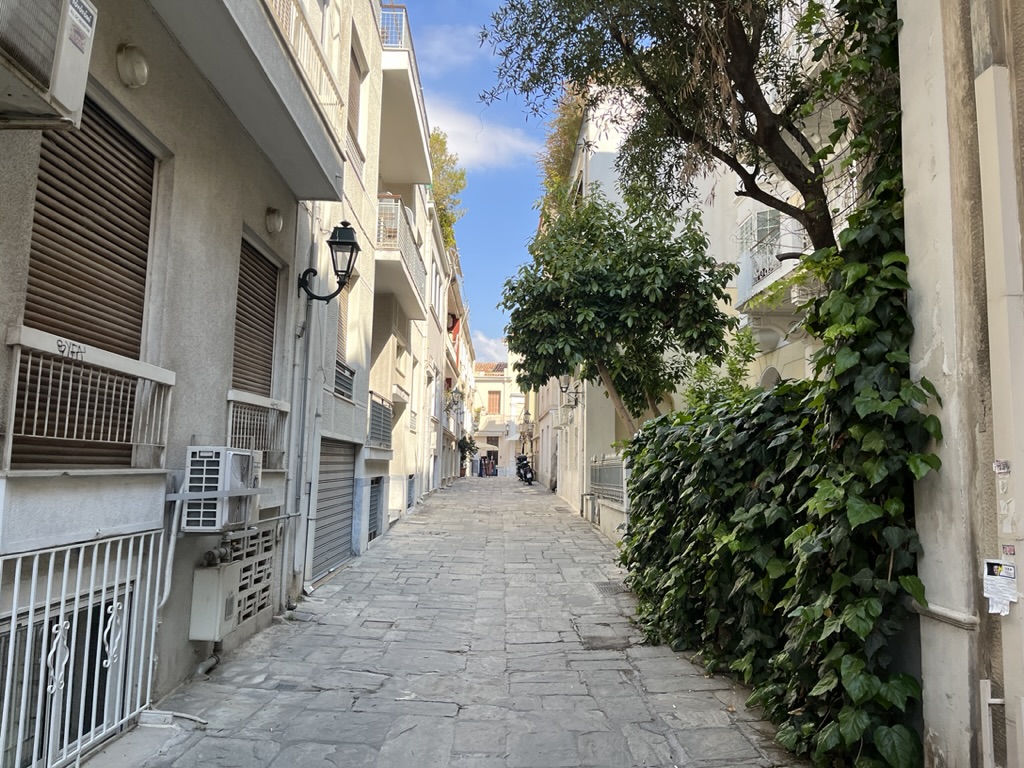
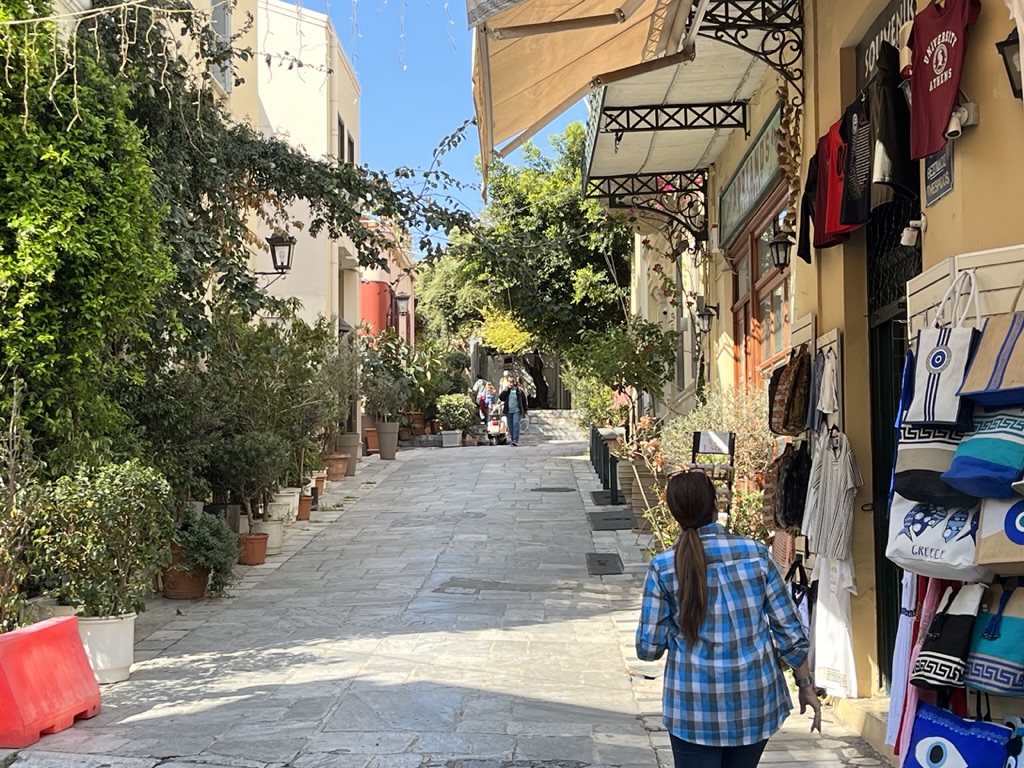
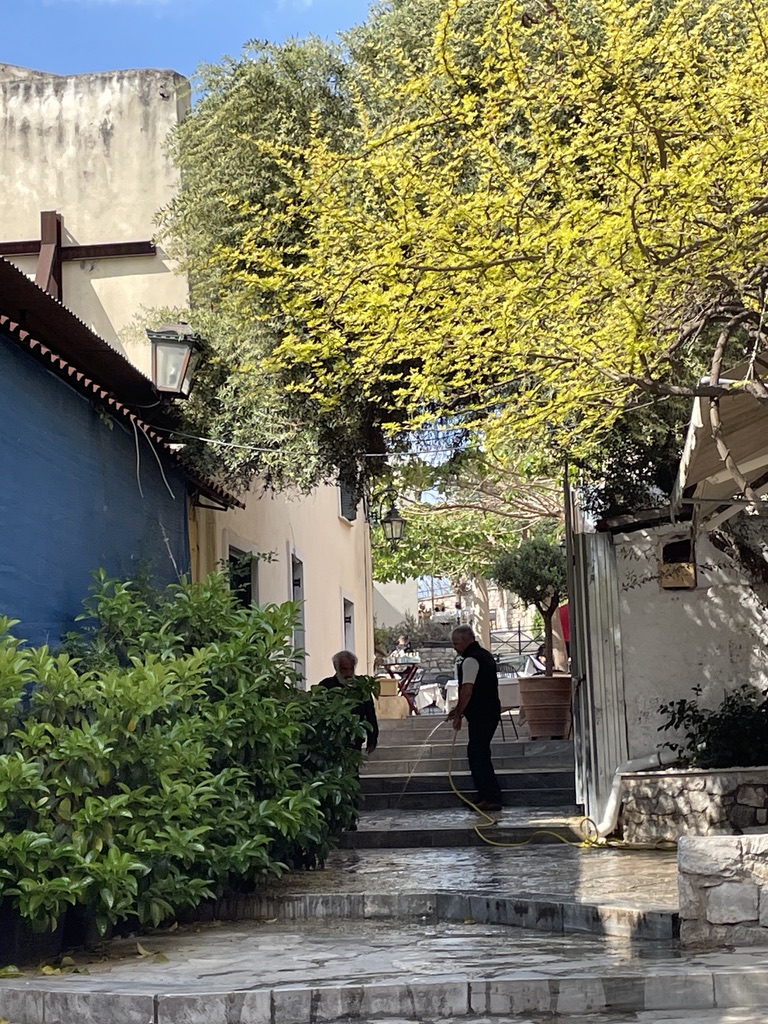
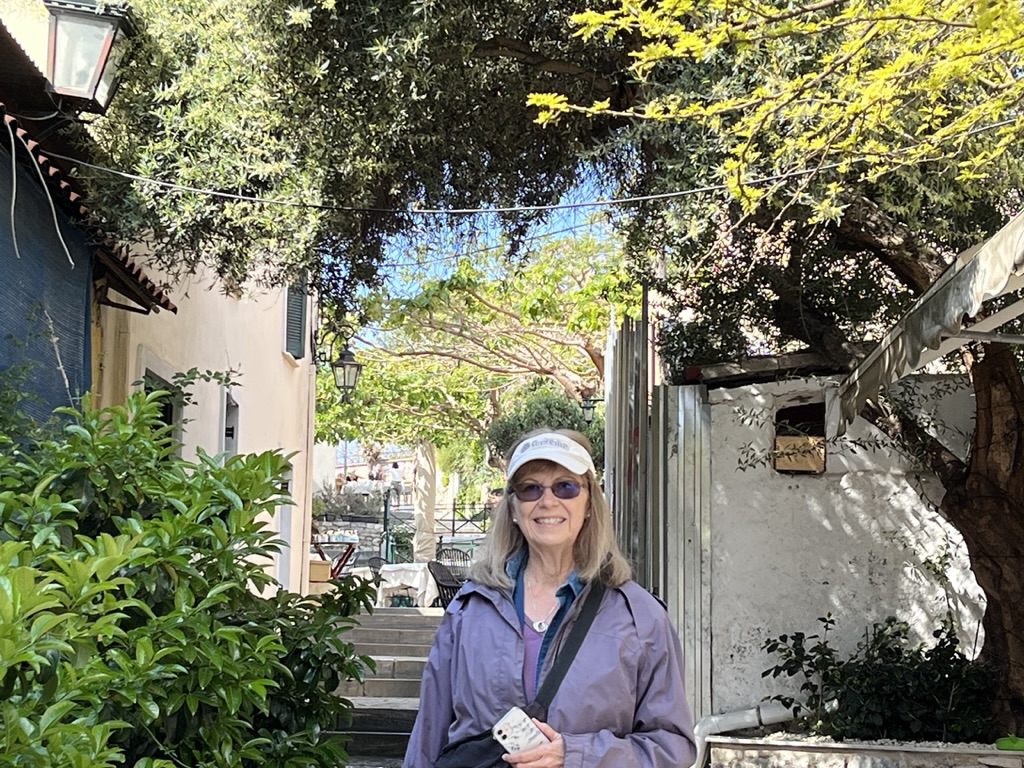
and quaint eateries,
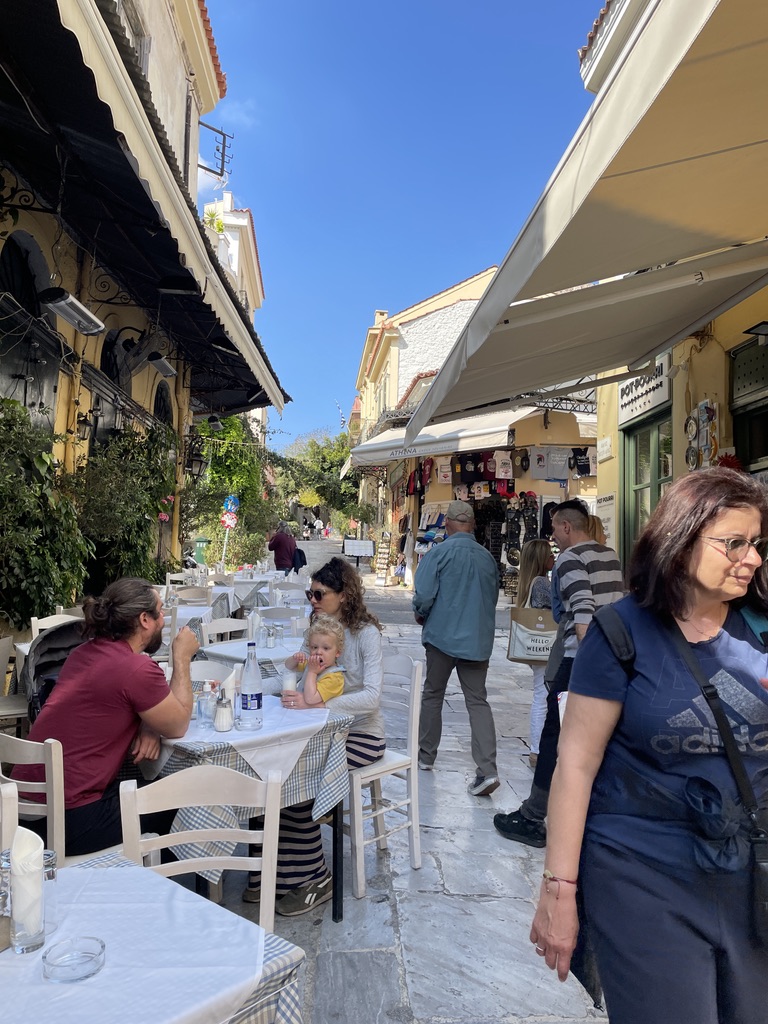
and busy tourists.
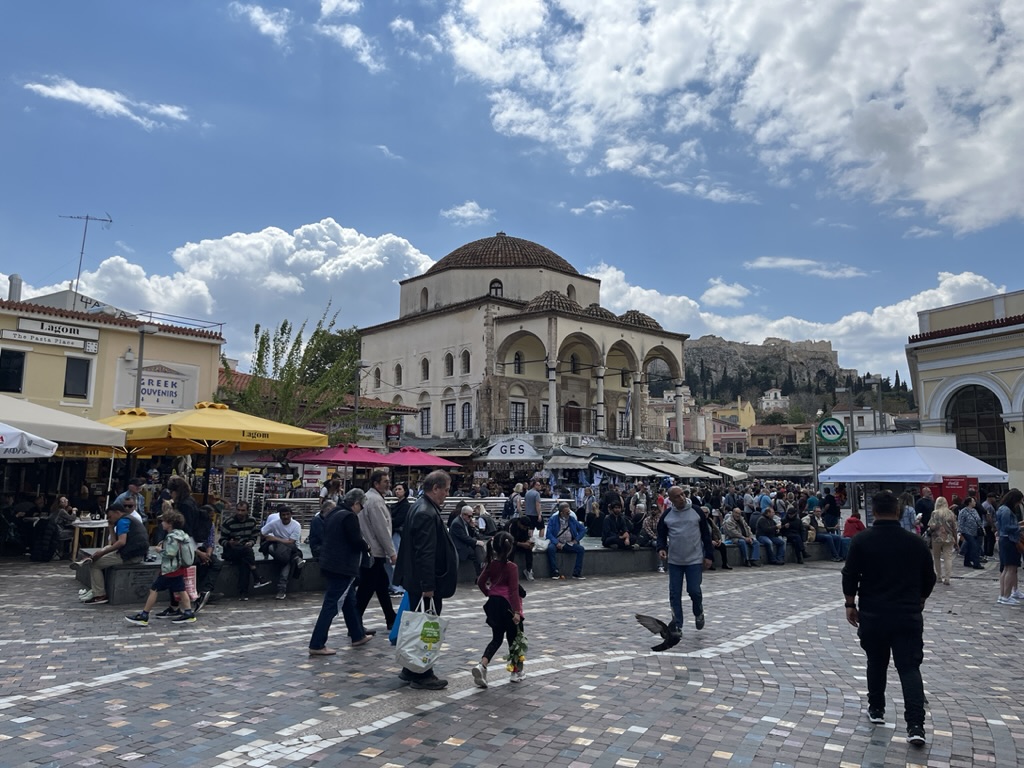
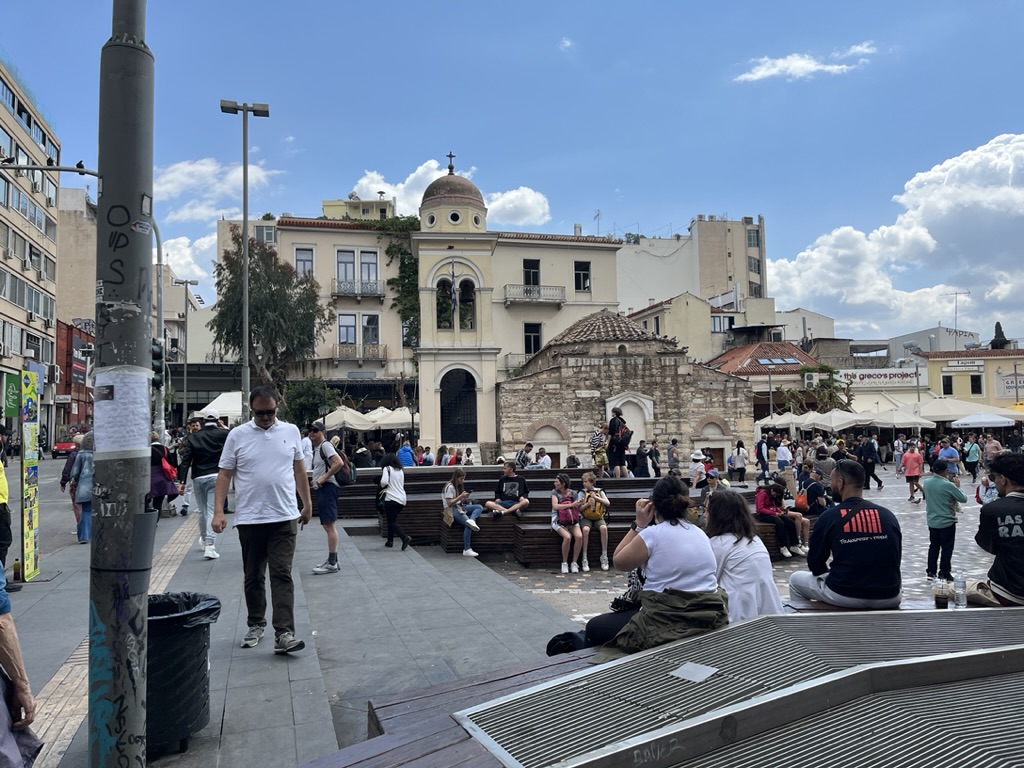
Surrounded by ancient ruins…
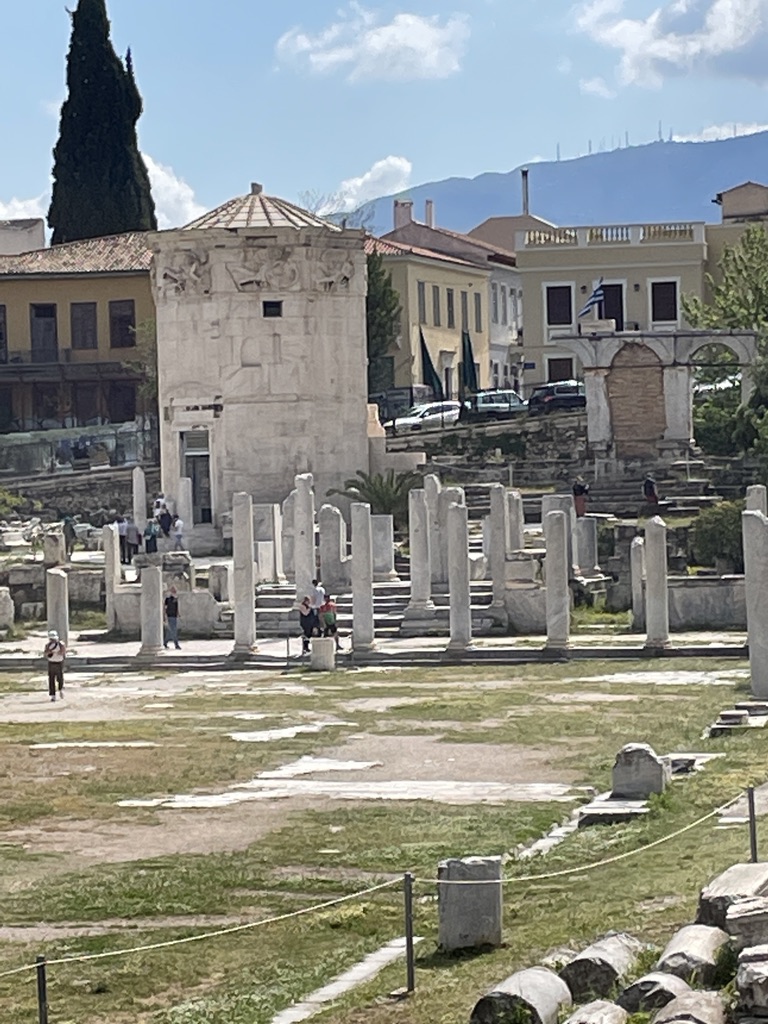
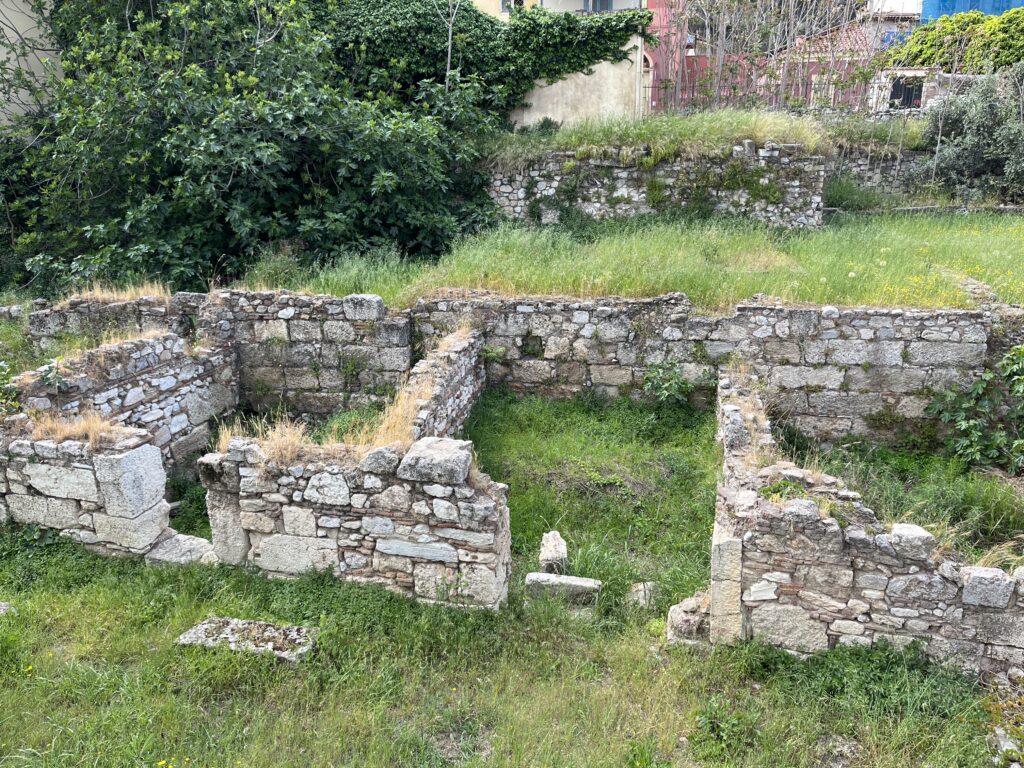
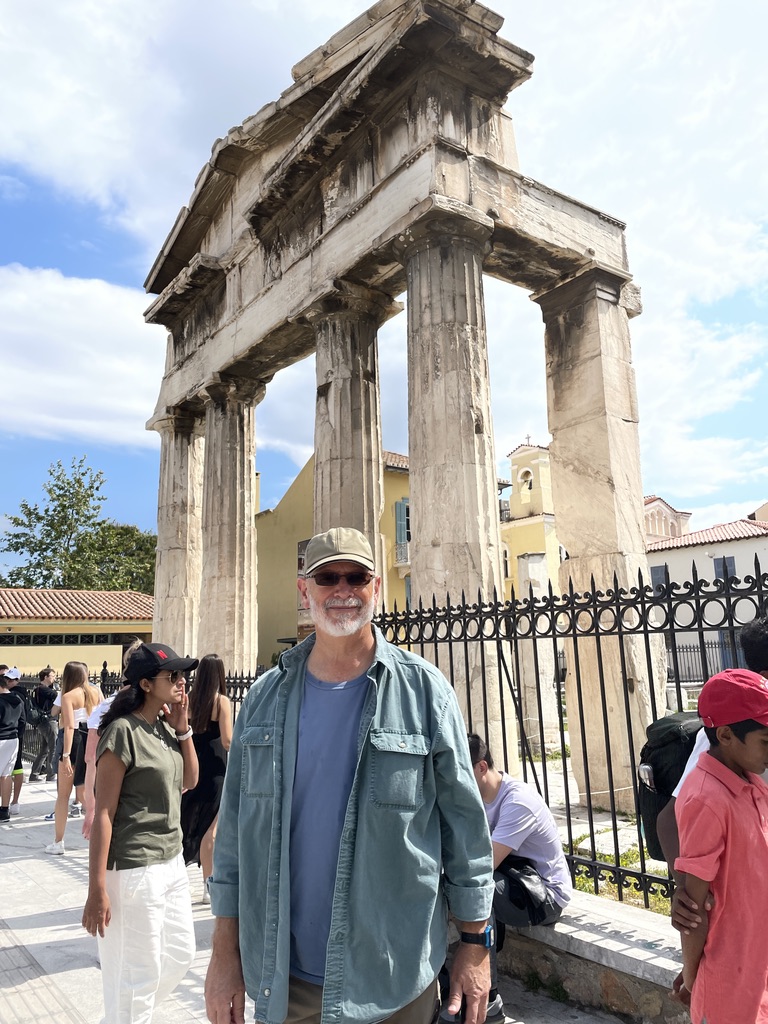
One of our objectives for the day was to get a shot of the Parthenon up on the Acropolis.
This proved to be a project as the Plaka is actually on the back side of the mountain.
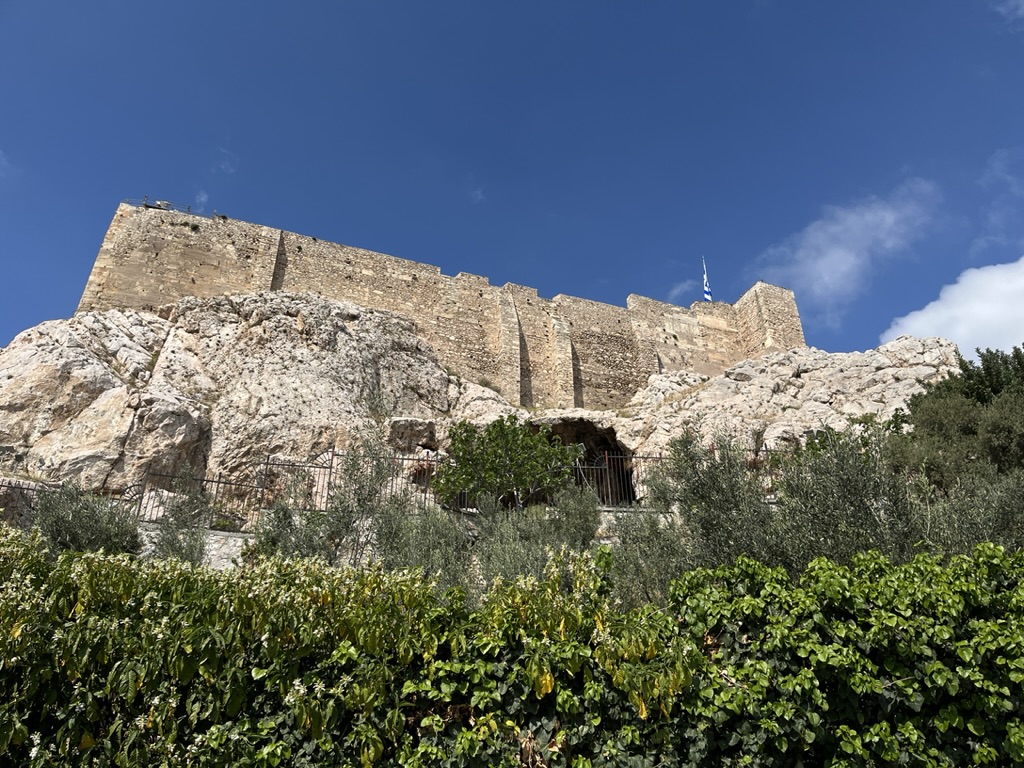
So we set off to walk around the mountain, only to find ourselves stopped for lunch at a little restaurant with patio seating and a view of the Stoa of Attalos (a reconstruction of the ancient market square-little open air shops were tucked away inside away from the weather).
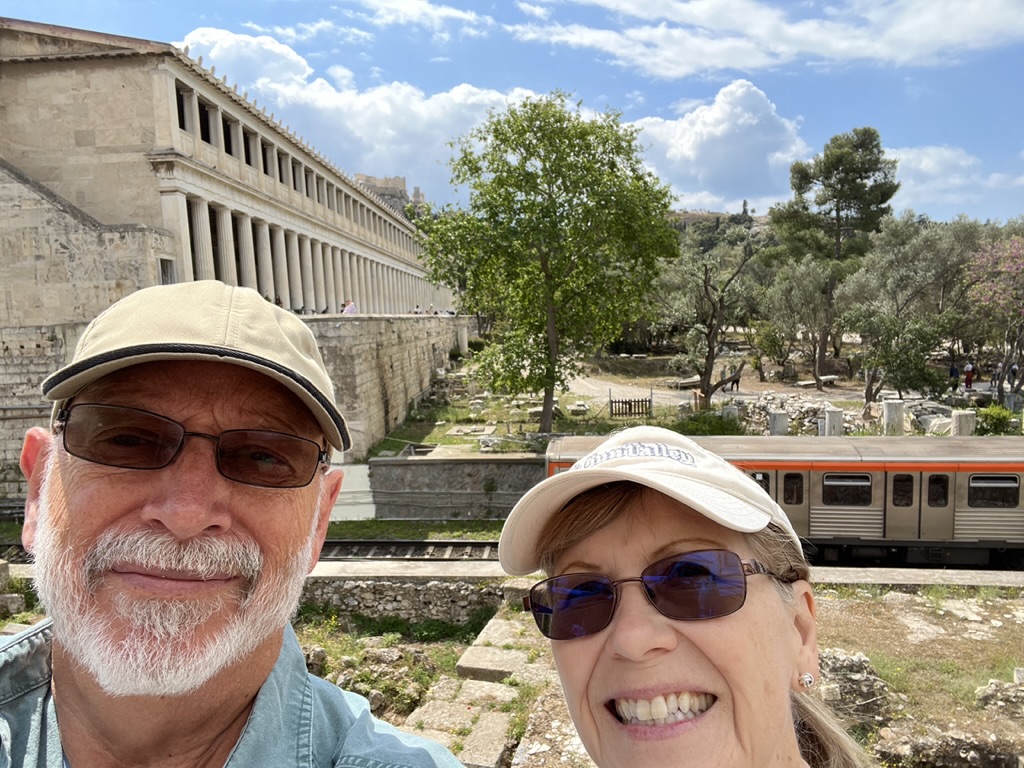
The restaurant we selected wasn’t on a quiet shady side-street. Rather it was on the main tourist route. But we were encouraged that most people in the crowded outdoor seating area looked to be locals lingering over a Sunday morning cup of coffee and engaging in animated conversation – in Greek.
Lunch was, as we expected, very traditional (including the obligatory french fries and tzatziki sauce).
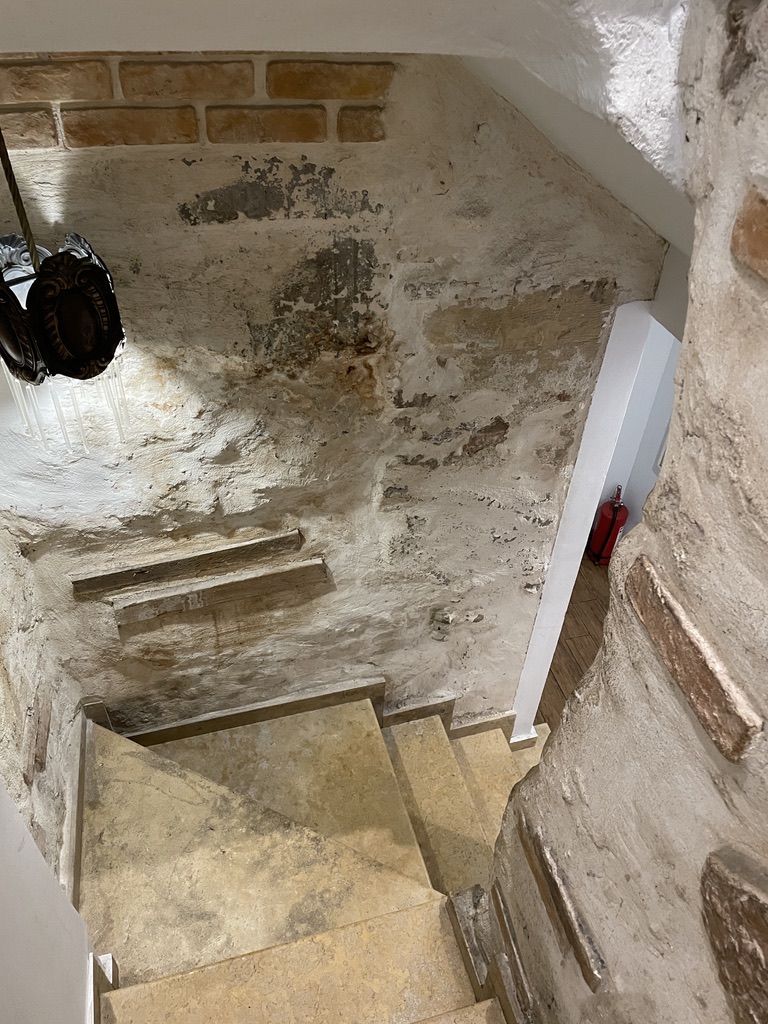
After lunch we walked as far as Thisseos Square where we finally got a photo that included the Parthenon.
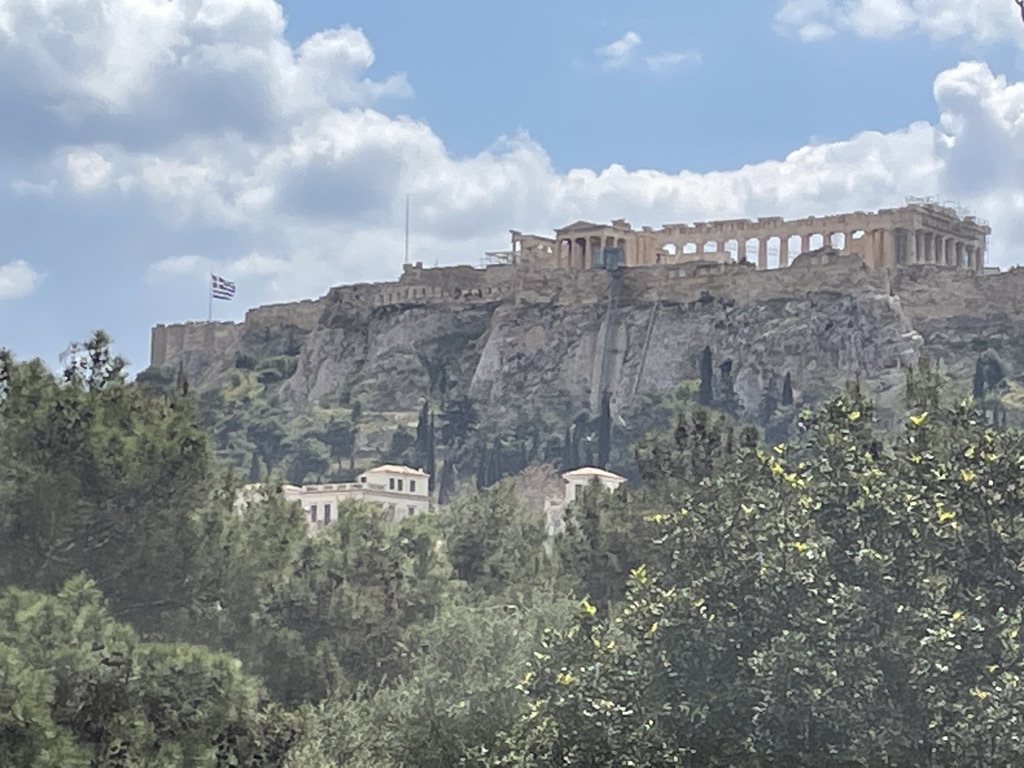
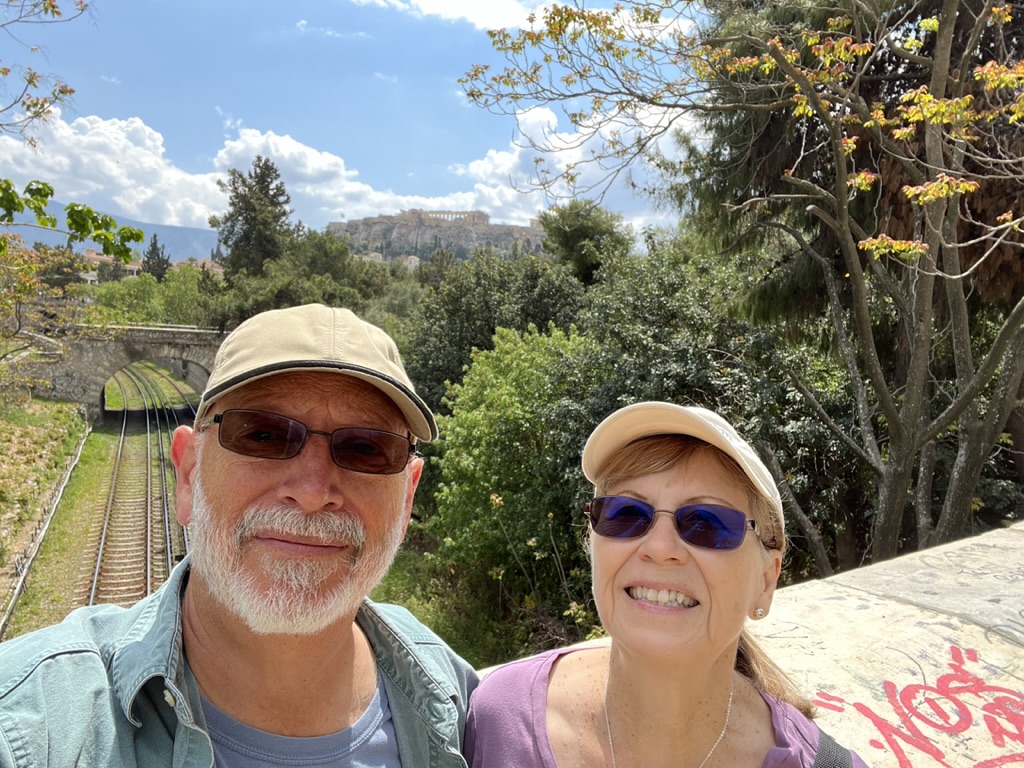
Diving back into the Plaka we passed several of our favorite (and interesting new) sites.
We stuck to a main (read: packed with tourists) street to head for our second objective of the day: The changing of the guard at the Monument to the Unknown Soldier outside the Parliament building.
When we were here 3 years ago it was cold and rainy day in January and one of the guards was ill, so the replacement guards only did a quick change while 2 additional guards pressed their shoulders into the ill man’s shoulders to support him as they marched him off the platform. Today, however was bright and sunny and the guards were in top form.
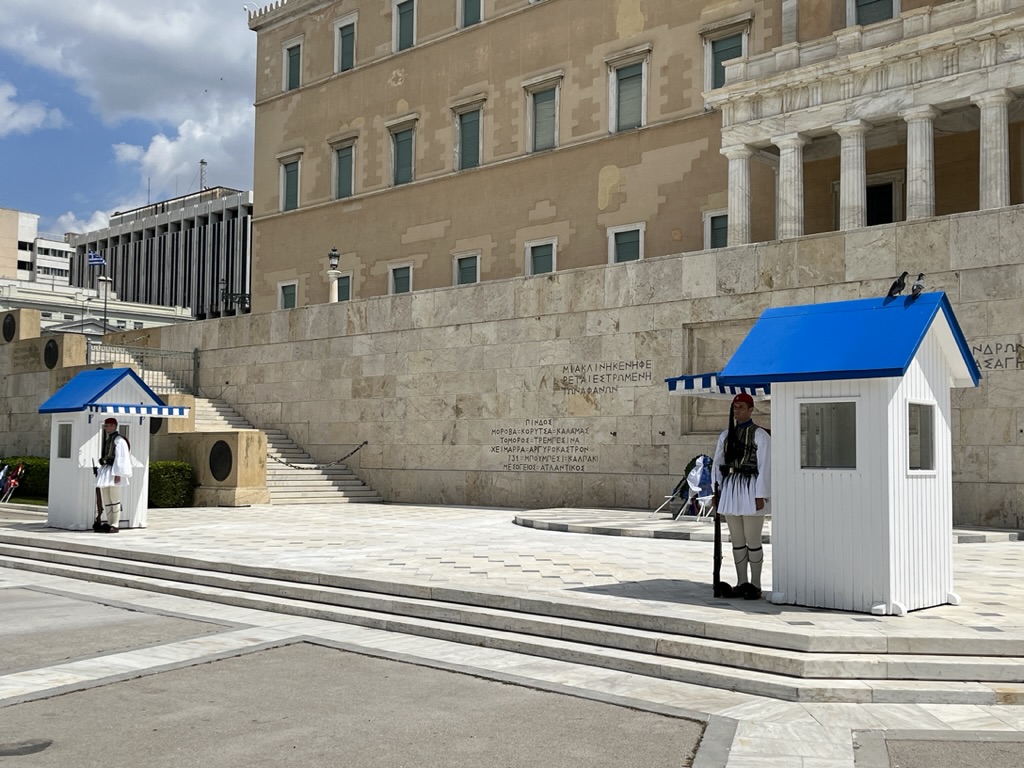
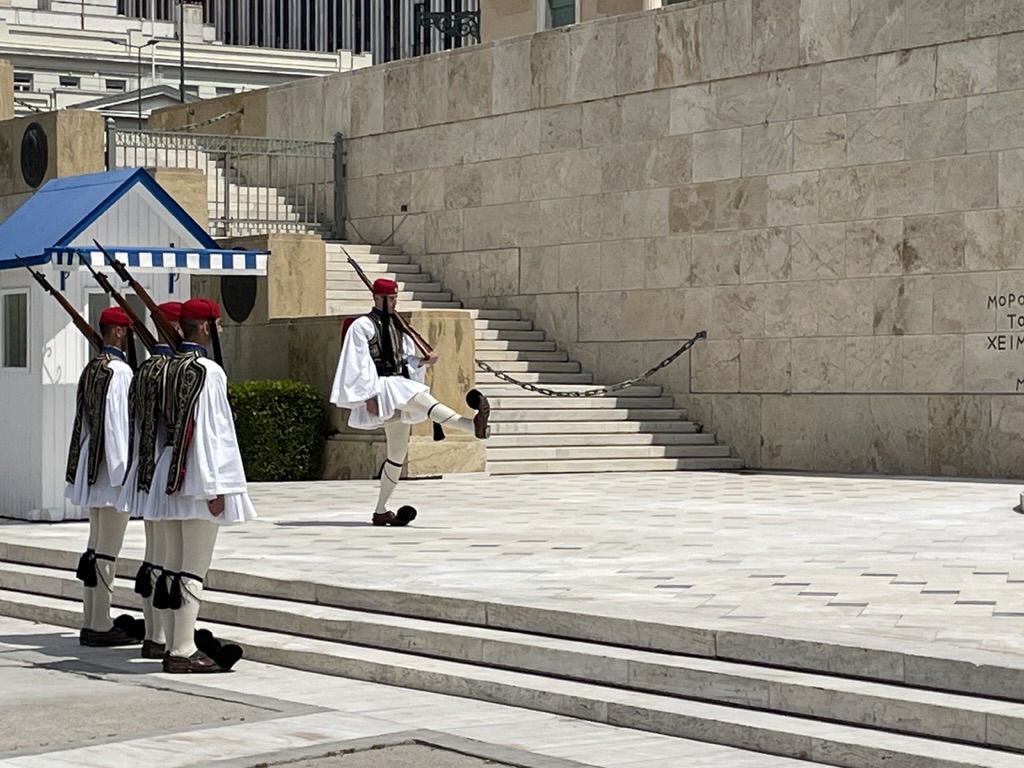
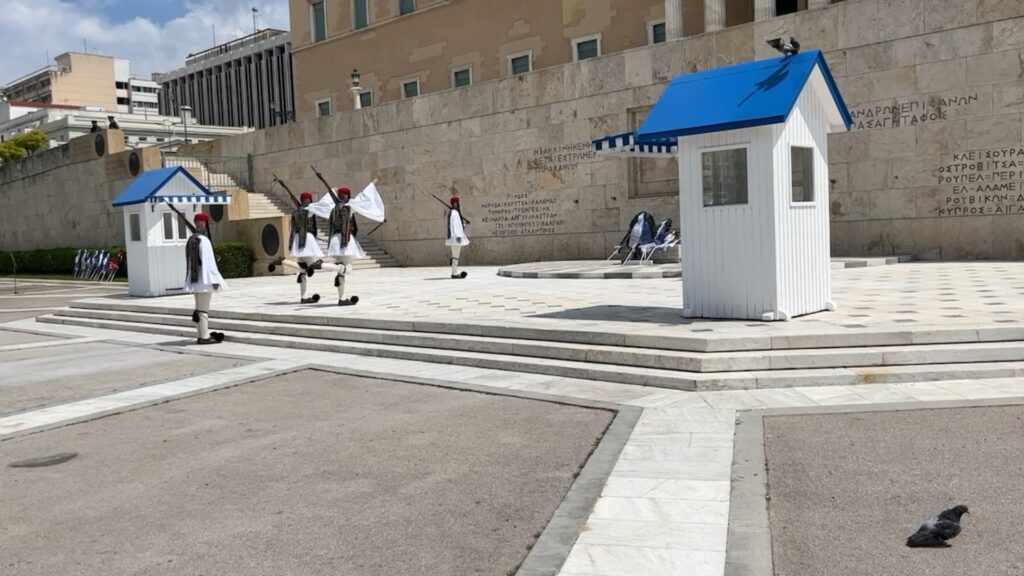
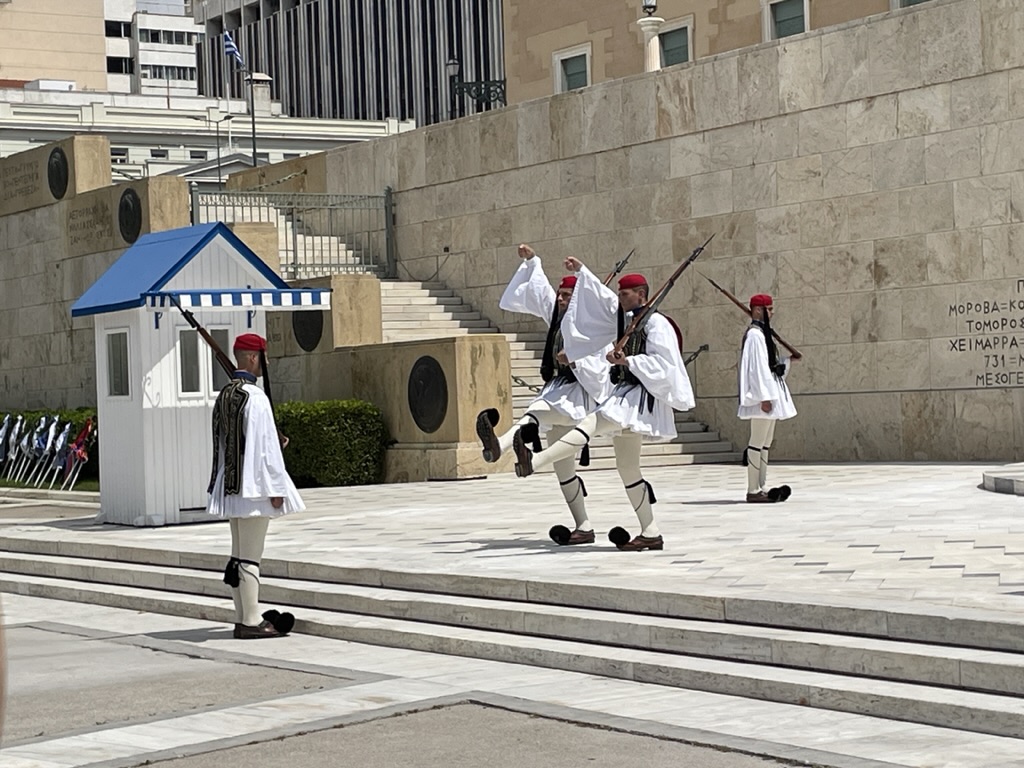
As the guards were finishing up, a military band marched onto the plaza accompanied by an honor guard made up of 3 branches of servicemen. The crowd management police moved us all across the street and we (along with the band and the honor guard) waited. And waited. And waited some more.
Eventually we had to leave to catch the shuttle bus back to the ship. We never did get to hear the band play or find out what the whole thing was about. I guess that’s something to add to our list next time.
Back on board we rested and blogged until the 5:30 church service followed by a 6:30 lecture on “The Peloponnesian War: Struggle for Hegemony in Ancient Greece”, then a quick dinner and BBB where our score (11/18) doesn’t seem to accurately reflect how well we thought we did. Oh well, such is life.
Tomorrow’s a big day so we’re off to bed early.
Nite all,
Cheryl’s Factoids:
- HADRIAN’S ARCH: Unknown who built it, but the location of the arch marks the line between the ancient part of Athens and the Roman Emperor Hadrian’s additions (including the building of the nearby temple complex in 131 or 132 AD).
- PELOPONNESIAN WARS: There were 3 “wars” over 60 years – the third war finally finished it. The battles were between Athens and Sparta (supported by their allies) – the two most powerful city-states in ancient Greece at the time (431 to 405 B.C.E.). The final war shifted power from Athens to Sparta, making Sparta the most powerful city-state in the region (until Alexander the Great started conquering everything). Our lecturer’s opinion is that if there are two powerful entities that occupy the same “area”, then war ensues (such as China and the US with their ocean-crossing missiles) and that both World Wars occurred because the battle in the little nations pulled in the big nations that were pledged to support them (such as Taiwan and the US). He felt that conflict with China is coming, but not a “metal” war.





3 synonymous words: Ancient, Ruin, Randy. Figures….